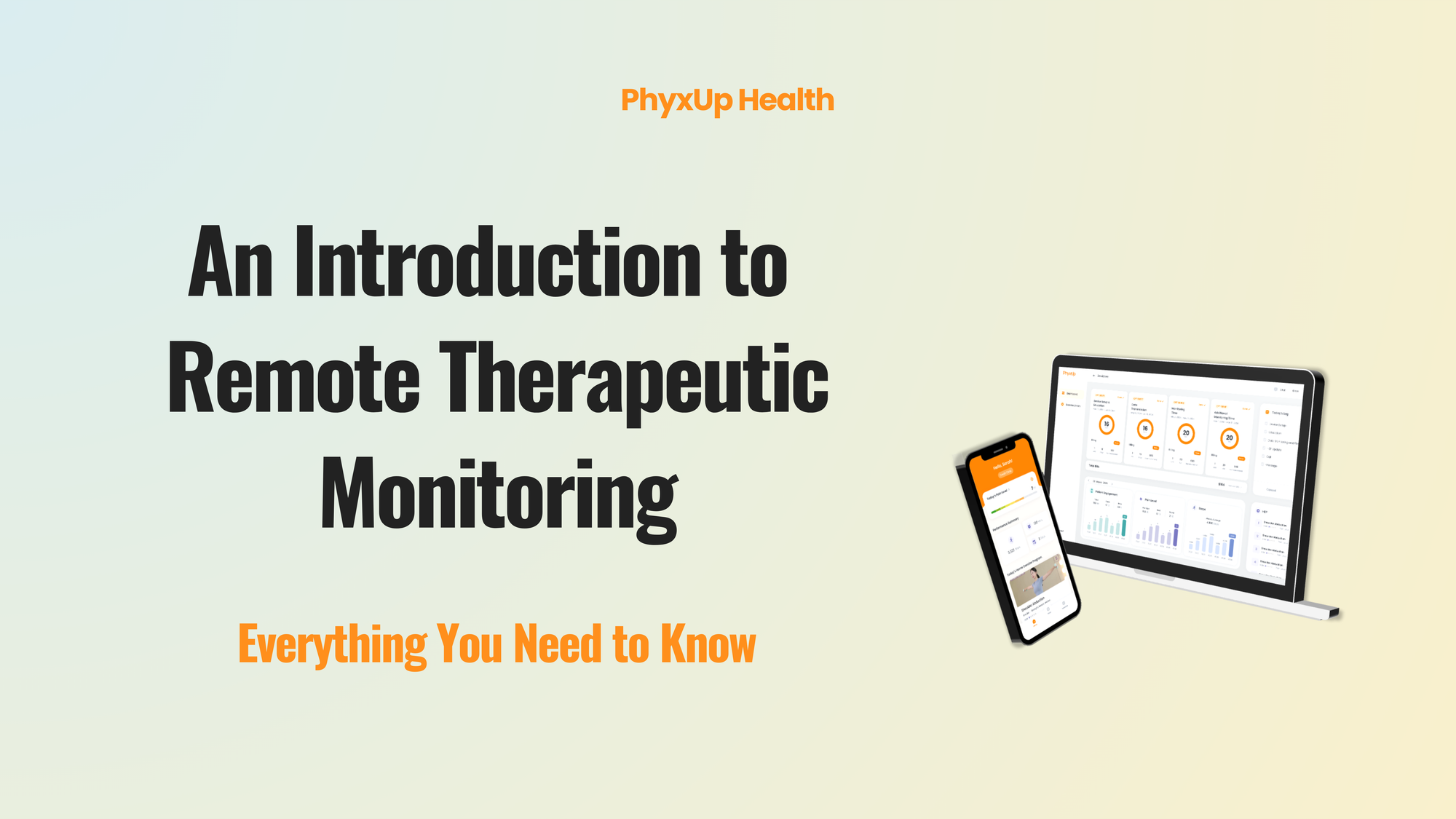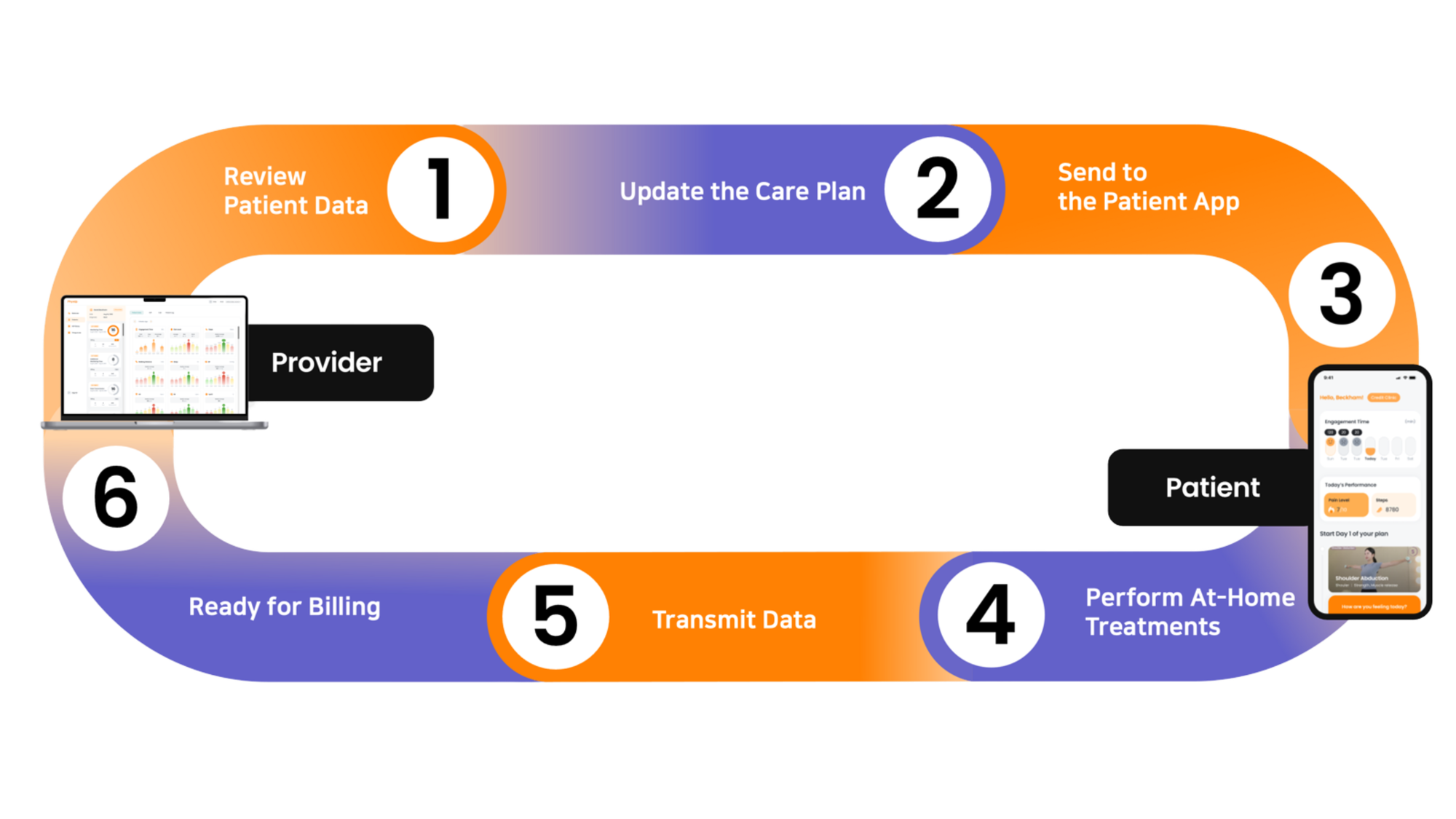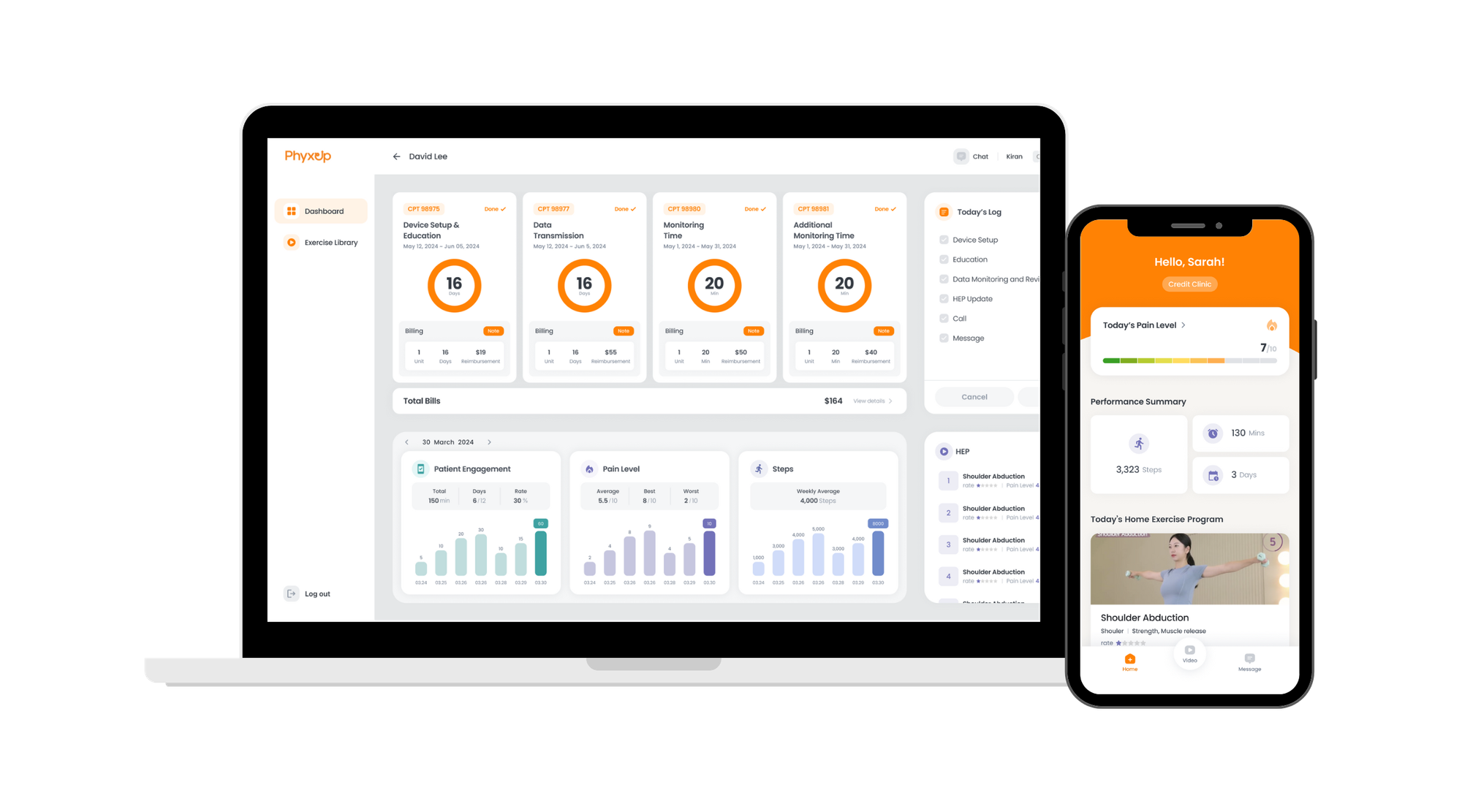Remote Therapeutic Monitoring (RTM) 101: A Beginner’s Guide

What is Remote Therapeutic Monitoring (RTM)?
Remote Therapeutic Monitoring (RTM) is a technology-driven approach that allows healthcare providers to track and monitor patient progress between in-person visits. Through a combination of web and mobile app platforms, RTM enables providers to collect and transmit non-physiological data—such as pain levels, mobility, and adherence to treatment plans. This comprehensive data provides an ongoing view of a patient’s status, helping improve decision-making and patient care.
RTM extends the care patients receive beyond the clinic, promoting continuous engagement and improving adherence to treatment plans. Real-time tracking allows for timely interventions, leading to better patient outcomes and fewer hospital readmissions. Patients enjoy enhanced communication with their healthcare providers, receiving personalized, proactive care rather than waiting for the next appointment.
Understanding RTM CPT Codes & Reimbursement
CMS introduced new RTM CPT codes in the 2022 final rule to define RTM service delivery and reimbursement rates. These codes allow healthcare providers to receive compensation for the remote monitoring of patients, creating new revenue streams for clinics and healthcare practices:
- CPT 98975 – Initial setup and patient education (billed once per episode of care)
- CPT 98976 & 98977 – Device supply for RTM (billed every 30 days)
- CPT 98980 – First 20 minutes of RTM treatment management (billed monthly)
- CPT 98981 – Additional RTM treatment management time (billed multiple times per month)
How RTM Works
Here's how RTM works to benefit both healthcare providers and patients:
Step 1. In-Person Session
The patient attends a physical therapy session, where the therapist provides treatment and sets recovery goals.
Step 2. Home Exercise Program via App
The therapist sends a personalized home exercise program (HEP) to the patient through an RTM app. The patient follows the program, logs pain levels, and stays engaged in their recovery.
Step 3. RTM Collects Data
RTM collects essential data, such as exercise completion and pain levels, and transmits it to the therapist’s RTM dashboard.
Step 4. Data Review by Therapist
The therapist reviews patient data, gaining valuable insights into exercise adherence, pain levels, and recovery progress, enabling informed treatment decisions.
Step 5. Clinical Decision Support
Based on real-time data, therapists make adjustments to treatment plans, particularly when a patient experiences ongoing pain despite completing the prescribed exercises.
Step 6. Plan of Care Updates
The therapist updates the plan of care based on real-time data, ensuring the treatment plan evolves with the patient’s progress.
Step 7. Insurance Billing and Revenue Generation
Once the RTM process is complete, billing is ready for submission. Practices can submit RTM claims for reimbursement, generating additional revenue and enhancing financial sustainability.

Who Can Bill for RTM?
RTM falls under general supervision, not evaluation and management (E/M) services, making it accessible for physical therapists, occupational therapists, and speech-language pathologists to bill for RTM services. This allows for greater access to remote patient monitoring and expands the range of providers who can deliver RTM services.
By utilizing RTM software solutions, providers can monitor patient progress while ensuring compliance with Medicare and commercial payer guidelines. Many physical therapy clinics and rehabilitation centers have embraced RTM technology to improve patient care and create new revenue streams.
What Devices Are Used for RTM?
These devices must meet the FDA’s Software as a Medical Device (SaMD) framework and be intended for diagnosing, treating, or preventing health conditions. RTM software applications can qualify as SaMD when they comply with these standards.
Clinics are increasingly adopting RTM platforms that track patient-reported outcomes (PROs), adherence to home exercise programs (HEPs), and patient engagement. With an RTM solution like PhyxUp Health, providers can easily monitor patient progress, improve engagement, and simplify billing and reimbursement processes.

The Benefits of RTM for Patients and Providers
Improved Patient Outcomes
RTM ensures continuous patient engagement, which helps patients stay on track with their rehabilitation and treatment plans. This proactive approach reduces complications, accelerates recovery, and improves overall health outcomes. By providing real-time insights, RTM minimizes treatment gaps, reducing unnecessary emergency visits and hospital readmissions.
Additional Revenue for Healthcare Providers
RTM opens new revenue streams for healthcare providers. With the RTM CPT codes in place, clinics can now bill for remote services, providing financial benefits as the adoption of digital health solutions continues to grow. Practices using RTM software can generate additional revenue by remotely monitoring patients and improving operational efficiency.
Reduced Clinician Burnout
By automating patient tracking and providing AI-driven insights, RTM reduces administrative burdens for providers. This allows clinicians to spend more time focusing on patient care rather than paperwork, improving overall workflow and reducing clinician burnout.
The Future of Healthcare with RTM
RTM CPT codes represent a game-changing opportunity for healthcare providers. RTM allows real-time patient monitoring, enhanced treatment adherence, and better health outcomes—without adding extra workload to healthcare staff.
Why RTM Matters for Your Practice
- Generates new revenue with Medicare & insurance billing
- Enhances patient engagement & adherence
- Optimizes remote care and timely interventions
- Supports clinician efficiency & data-driven decision-making
- Leverages digital health technology for better treatment outcomes
Adopting RTM technology today positions your practice for success in the rapidly evolving digital healthcare landscape. Don’t miss the opportunity to scale your practice with remote patient monitoring solutions!
